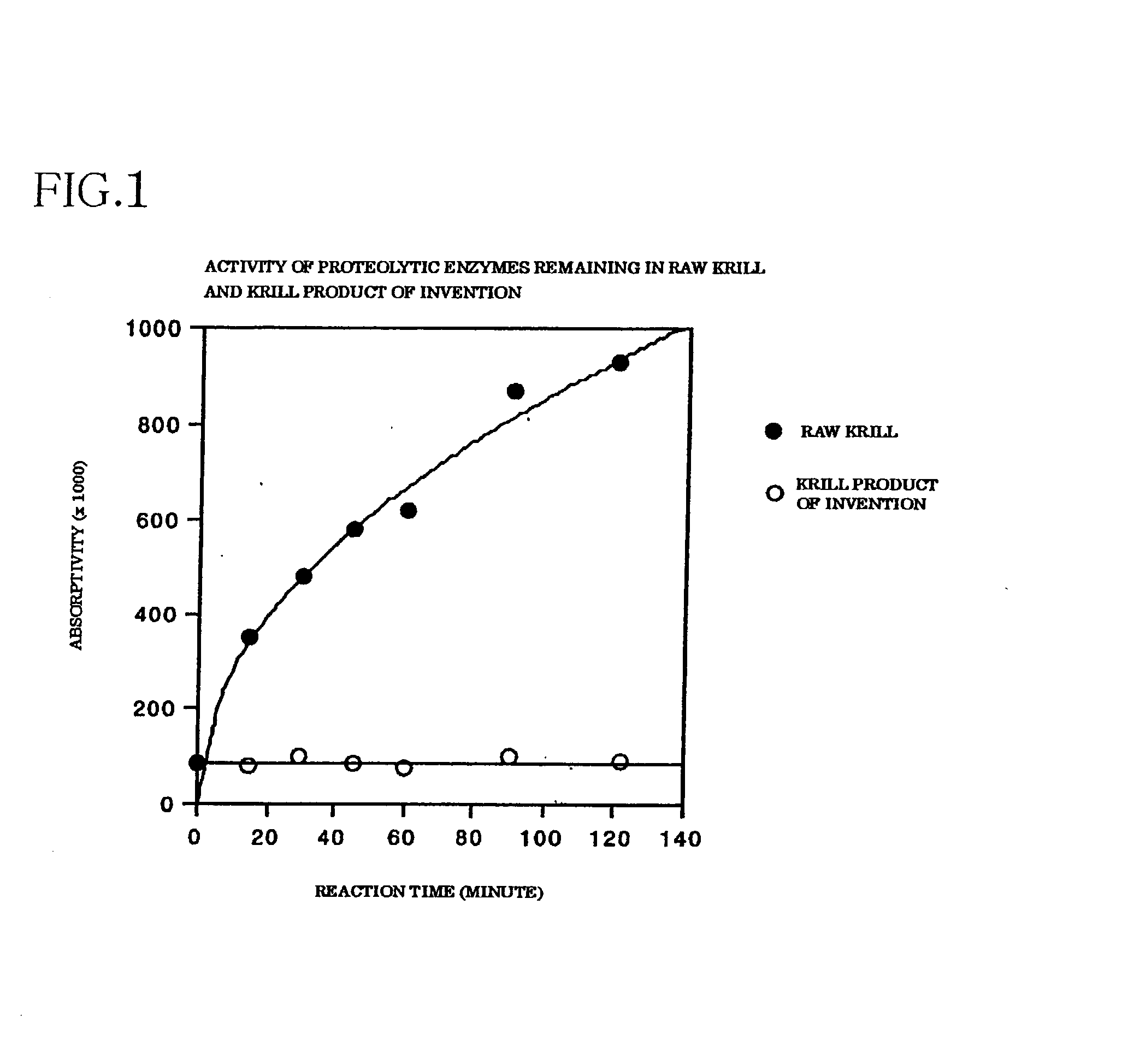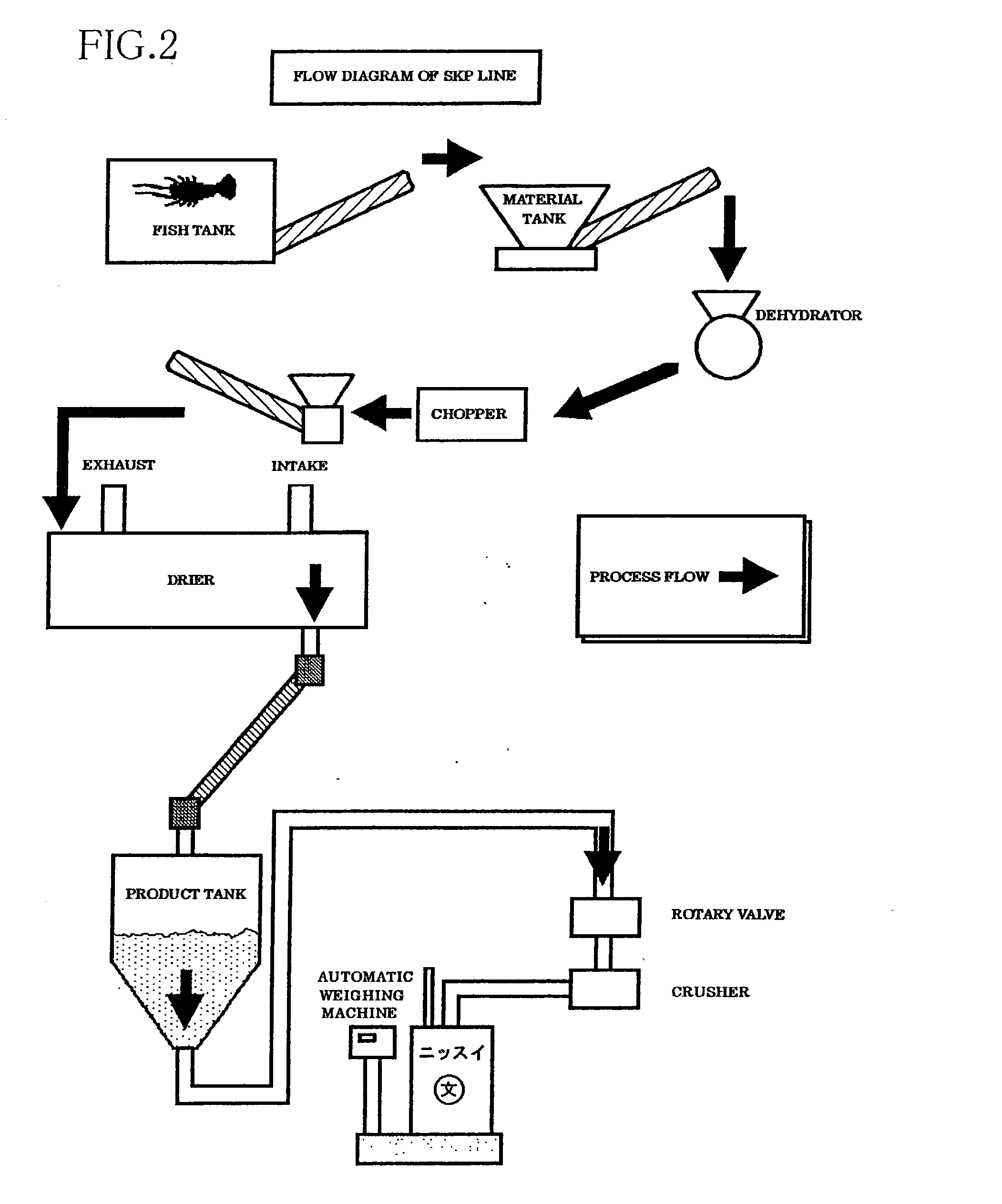Process for making dried powdery and granular krill
- Summary
- Abstract
- Description
- Claims
- Application Information
AI Technical Summary
Benefits of technology
Problems solved by technology
Method used
Image
Examples
example 1
[0048] 1. Process Flow Including Plant for Drying Krill
[0049] An outline of the process flow is as shown in FIG. 2. Krill materials are first conveyed by a krill supply apparatus from a fish tank to a material tank, and are then supplied to a dehydrator in a proper lot. The use of a dehydrator basically intends to remove seawater contained in the krill materials. Since it is expected that the amount of water contained in krill varies depending on the materials, a diaphragm is adjusted to provide a proper dehydration rate, taking into account the performance of the dehydrator. The dehydrated materials are coarsely crushed by a chopper and are then supplied to a drier. The materials are boiled in the drier under heating with vapor, followed by further drying. At the time when reaching a predetermined water content, the drying is stopped and a resulting dried semifinished product is ejected. The dried semifinished product is conveyed to a product tank, and is then automatically package...
PUM
 Login to View More
Login to View More Abstract
Description
Claims
Application Information
 Login to View More
Login to View More - R&D
- Intellectual Property
- Life Sciences
- Materials
- Tech Scout
- Unparalleled Data Quality
- Higher Quality Content
- 60% Fewer Hallucinations
Browse by: Latest US Patents, China's latest patents, Technical Efficacy Thesaurus, Application Domain, Technology Topic, Popular Technical Reports.
© 2025 PatSnap. All rights reserved.Legal|Privacy policy|Modern Slavery Act Transparency Statement|Sitemap|About US| Contact US: help@patsnap.com


